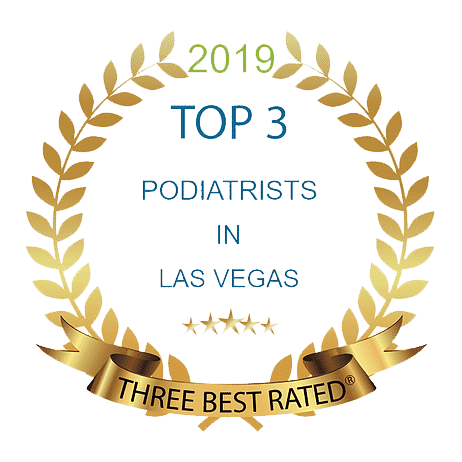Dr. Peter J. Bregman, DPM
Top Rated Podiatrist in Las Vegas
Conditions & Treatments
- Achilles
- Adult Flat Feet
- Arthritis
- Bunion
- Custom Orthotics
- Diabetic. Foot Care
- Hammertoes
- Heel Pain / Heel Spur
- Laser Therapy
- Minimal Incision Surgery
- Morton’s Neuroma
- Neuropathy
- Pediatric Foot Problems
- Plantar Fasciitis
- Shockwave Therapy
- Stump Neuroma
- Tarsal Tunnel Syndrome
- Tendonitis
- Toenail Fungus
- Trauma / Injury
- Defeating Morton Neuroma
Tarsal Tunnel Syndrome (TTS)
What is Tarsal Tunnel Syndrome? (TTS)
If you are familiar with Carpal Tunnel Syndrome it is very similar. It is a nerve entrapment that occurs in the inside of the ankle and can cause numbness and tingling and pain. It is often misdiagnosed as Plantar Fasciitis or is also present with fasciitis. It is unfortunately missed by many doctors as they do not have specialized training as Dr. Bregman does. The most common causes of TTS are:
- Biomechanical-the way the foot and ankle move and their position as it affects the nerve causing it to over-stretch or strain when walking or running.
- Soft tissue mass-some tumor or even an accessory muscle in the same compartment causing more pressure in the tunnel.
- Tumor of the nerve itself-this is rare but can occur and is best diagnosed with ultrasound or MRI.
- Diabetics are more prone to having this because of swelling of the nerves and tightening of the soft tissues that surround the nerve.
Signs and Symptoms
- Most people will have a varied presentation of signs and symptoms but the most common are the following:
- Nocturnal or night pain
- Tingling pins and needles in the toes, arch, and heel area
- Radiating pain that shoots into the foot or higher towards the knee.
- Pain in heel area when not on the foot or weight-bearing.
Diagnosing Tarsal Tunnel?
How do we diagnose the problem? This is one of the reasons many people suffer with this condition as it is often misdiagnosed or not diagnosed at all.
- MRI is NOT a valuable tool for this as most of the time especially in the early stages of the problem there are no MRI findings
- It is a clinical diagnosis, meaning it must be diagnosed by a physician who has training in peripheral nerve problems like Dr. Bregman. This requires listening to the patient’s complaints and prodding and poking as needed to discover the source of the pain.
- Blood work is often done to rule out other issues that may be causing or making things worse.
- EMG/NVC testing is also used to help make the diagnosis, but it is not to be relied upon to make the diagnosis. This is a test where small needles are put into the leg or foot and a small amount of electricity is sent through to determine if the nerves are functioning as they should. You are usually sent to a specialist for this, and it is important to go to someone who is reliable.
Treatment Options
- Physical Therapy is the best chance of helping but is not often successful. Specialized therapy called nerve gliding and nerve flossing is usually the best choice and can also .be used after surgery
- Exosome therapy is a new and exciting treatment but is expensive this involves injection into the nerves involved as well as IV administration
Surgery-Usually indicated in patients who have not responded to conservative treatment for 6 months. Dr Bregman is one of the top surgeons in the world who performs this surgery and performs over 50 a year and now it is a simple 45 minute outpatient surgery and you are on your feet immediately. When used with biologics the success rate is over 90%.






